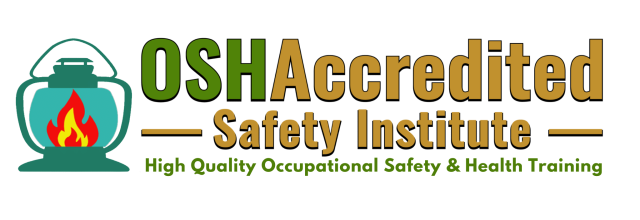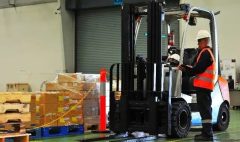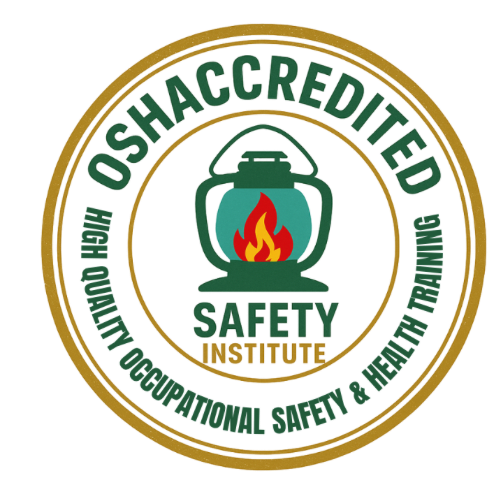Safeguard Your Vision at Work with OSHA Training or Online Safety Training
Safeguard Your Vision at Work with OSHA Training or Online Safety Training
Safety Glasses
In today’s modern workplaces, ensuring safety is more than just a priority, it’s a requirement. One critical aspect of workplace safety, which is often overlooked until an accident occurs, is eye protection but it is important to ensure that safety glasses meet OSHA and ANSI standards. Employers are mandated to provide personal protective equipment for employees which includes safety glasses and it’s essential to understand how to choose a pair of safety glasses that meets OSHA safety standards, provides comfort, and keeps employee’s vision clear and protected. This blog will explore the essentials of OSHA-compliant eyewear, including ANSI standards, OSHA training requirements, and what to look for when selecting protective safety glasses.
OSHA Standard 1910.133
The general rules for eye protection are outlined in §1910.133. This standard-states that employers must ensure employees who wear prescription glasses and work in areas with eye hazards use protective eyewear that either includes their prescription or can be worn over their prescription glasses without interfering with the proper fit or function of either. According to §1910.133(a)(3), OSHA mandates that such eye protection must meet one of two industry standards referenced in §1910.133(b): https://rb.gy/npbo05 ANSI Z87.1-1989 or ANSI Z87.1-2003, both of which cover safety standards for personal eye and face protection. Therefore, whether your employer allows you to use existing safety frames with new prescription lenses depends on whether they meet one of these recognized standards.
OSHA Eye and Face Protection CFR 1910.133
https://www.osha.gov/laws-regs/regulations/standardnumber/1910/1910.133
Why OSHA-Approved Prescription Safety Glasses Matter
The Occupational Safety and Health Administration (OSHA) plays a vital role in setting workplace safety standards, and its regulations apply to virtually every industry. OSHA mandates the use of personal protective equipment (PPE), including eye protection, in environments where hazards are present. This includes settings where there are:
- Flying debris or dust particles
- Exposure to chemical splashes
- High-intensity lights, radiation, or sparks
- Potential for impact from tools or machinery
For workers who already wear prescription lenses, OSHA doesn’t allow regular glasses to double as safety equipment. Instead, you must use prescription safety glasses that meet OSHA and ANSI Z87.1 standards to ensure proper protection.
The Evolution of Safety Glasses: From Bulky to Comfortable
Not too long ago, wearing safety glasses often meant sacrificing comfort and style. Older models were typically bulky, heavy, and uncomfortable for long-term use. Fortunately, modern prescription safety glasses have come a long way. OSHA training has helped employees to understand the importance of selection and care.
Today, manufacturers design safety eyewear with lightweight materials, ergonomic frames, and even stylish options. Many now look and feel like regular glasses while still offering robust protection. This improvement in design makes it easier for employees to wear their PPE for extended periods, increasing compliance with safety standards.
Understanding ANSI Standards and What They Mean
To be OSHA-compliant, prescription safety glasses must meet standards set by the American National Standards Institute (ANSI). Specifically, ANSI Z87.1 is the gold standard for protective eyewear. This standard governs several factors including:
- Design and Construction: Ensures eyewear offers adequate coverage and does not obstruct vision.
- Impact Resistance: Evaluates both basic and high-impact capabilities.
- Penetration Resistance: Ensures lenses can resist sharp object penetration.
Let’s break down the two main categories of ANSI Z87.1 eyewear:
Basic Impact
For eyewear to be certified for basic impact, it must withstand a one-inch diameter steel ball dropped from a height of 50 inches. If the lens doesn’t crack or shatter, it qualifies for basic impact protection. These glasses are typically marked with Z87 along with the manufacturer’s name.
High Impact
High-impact safety glasses undergo a much more rigorous test. A quarter-inch steel ball is shot at the lens at speeds of up to 300 feet per second. If the lens survives the test, it qualifies for high-impact protection and is marked with Z87+. These are typically required in environments with power tools, machinery, or potential projectile hazards.
Additionally, ANSI standards use other markings to indicate specific lens properties:
- 3.0 or 5.0: Indicates the level of lens shading, important for bright environments or welding.
- S: Indicates special-purpose lenses for specific lighting or hazard conditions.
- V: Indicates lenses with variable tints, useful in fluctuating light conditions.
Side Shields: Extra Protection Against Peripheral Hazards
One commonly overlooked feature in online safety training is the importance of side shields. OSHA regulations require that safety glasses provide protection from flying particles coming from any direction, not just the front. In many workplaces, hazards can come from the sides, whether from grinding, cutting, or chemical splashes.
Many ANSI-rated safety glasses come with built-in or removable side shields to protect against these peripheral dangers. If your job exposes you to such risks, ensure your eyewear includes this critical feature.
ANSI/ISEA Z87.1-2020: Current Standard for Safety Glasses
https://blog.ansi.org/ansi-isea-z87-1-2020-safety-glasses-eye-protection/
ANSI/ISEA Z87.1-2020
https://shannonoptical.com/wp-content/uploads/2023/07/ANSI-ISEA-Z87-1-2020.pdf
Incorporating OSHA Training and Safety Courses
Understanding safety regulations isn’t just for employers—workers are expected to take an active role in their own safety. That’s why many workplaces now offer or require OSHA training or online safety training courses. These programs educate employees on how to:
- Recognize hazards in the workplace
- Select appropriate PPE, including eye protection
- Understand ANSI labeling and markings
- Properly care for and maintain safety eyewear
- Respond to eye injuries or emergencies
Enrolling in OSHA courses ensures that employees are equipped with up-to-date safety protocols and best practices, reducing the risk of injury and improving overall workplace safety culture.
The Manufacture and Selection of Eye Protection at Work
https://blogs.cdc.gov/niosh-science-blog/2022/06/08/mm-eyewear/
ANSI/ISEA Z87.1-2020
https://wwwn.cdc.gov/PPEInfo/Standards/Info/ANSI/ISEAZ8712020
Choosing the Right Prescription Safety Glasses
When it’s time to purchase prescription safety glasses, make sure to look for:
- ANSI Z87.1 Certification (Z87 or Z87+)
- Prescription-ready lenses with your correct optical measurements
- Comfortable frame design with adjustable nose pads or temples
- Anti-fog, anti-scratch coatings
- Side shield protection if required
- Lens tint suited for your work environment (clear, shaded, photochromic, etc.)
Online retailers and optical professionals now offer a wide selection of OSHA-compliant prescription safety glasses, and many provide virtual try-on tools to help with fitness and comfort.
Final Thoughts: Your Vision Is Worth Protecting
Eye injuries are one of the most common and preventable workplace hazards. A moment of carelessness or inadequate PPE can lead to permanent damage or even blindness. Thankfully, with the right OSHA-compliant prescription safety glasses, employees can perform their tasks confidently and safely.
Make sure your eyewear meets ANSI Z87.1 standards, includes the necessary features like side shields or tinted lenses, and is comfortable enough for all-day wear. Combine this with the knowledge gained from OSHA courses or online safety training, and you’ll be fully equipped to protect your vision and stay compliant with workplace regulations. Remember: when it comes to safety, especially your eyesight, cutting corners is never worth the risk.
Author: Dr. O’Neil G. Blake, Chief Executive Officer (CEO) of OSHAccredited Safety Institute
MS., MBA., MSc., BSc, CSP., ASP., CSHM., CSMP., MRSA.
Date: 04-27-2025













